Empowering growth
and progress
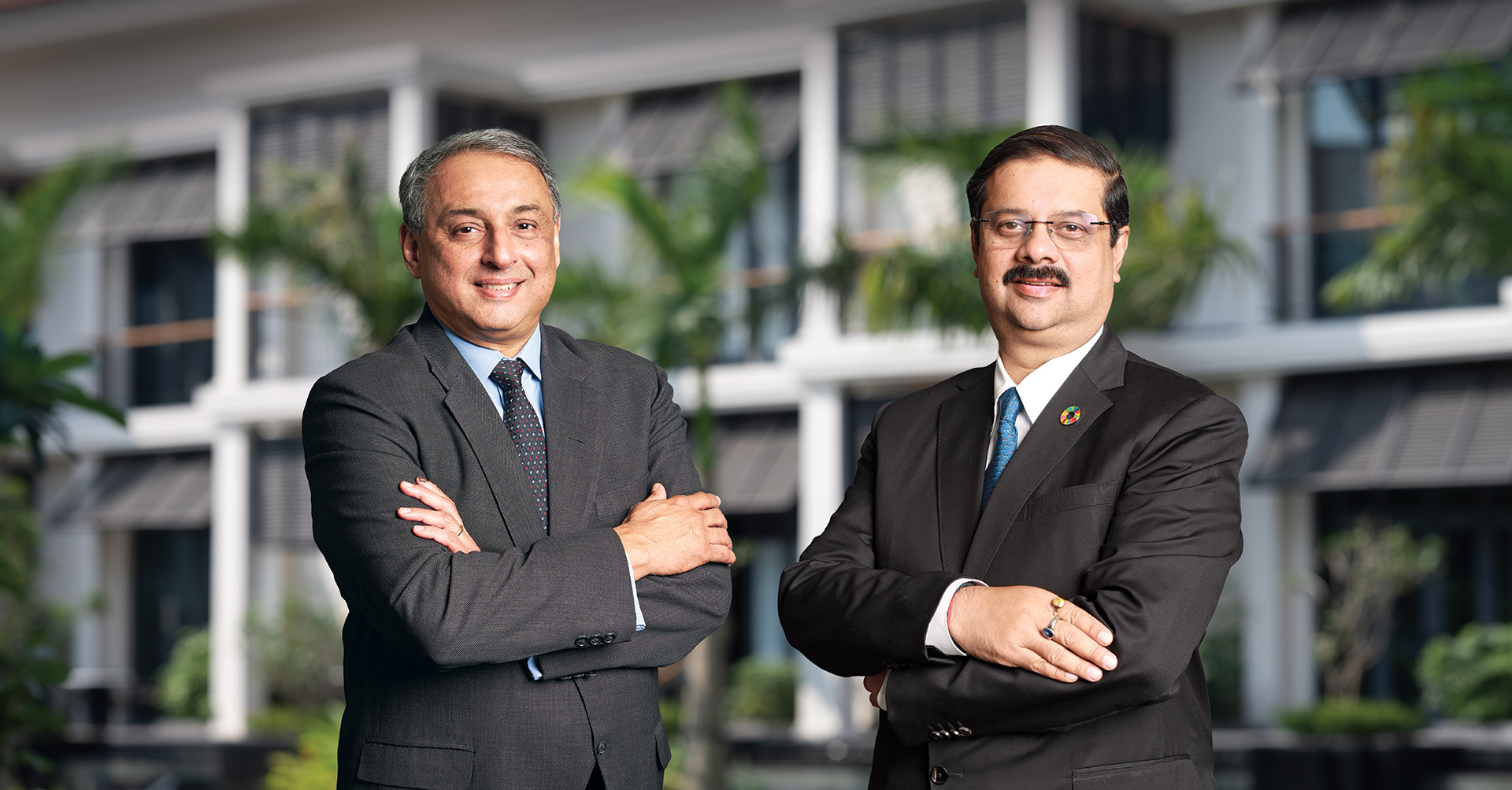
T V Narendran
Chief Executive Officer & Managing Director
Koushik Chatterjee
Executive Director & Chief Financial Officer

NINL Plant
What were the challenges and highlights for the global steel industry during the last financial year?
During FY2023-24, the steel industry faced an uneven global macro-economic landscape. China’s transition from investment-led growth to consumption-led growth contributed to a reduced demand for steel, as the country’s focus on heavy infrastructure investments seemed to taper. This was exacerbated by a sluggish real estate sector. The consequent overcapacity in China and higher exports brought about a downward pressure on global steel prices. The expansion of steelmaking capacities in regional markets also intensified competition. Geopolitical tensions in Ukraine and the Middle East disrupted traditional supply chains. Raw material prices and other costs remained relatively elevated even as steel prices significantly softened, putting pressure on margins for steel producers.
Meanwhile, steel companies around the world, but especially in Europe and East Asia, have started to engage very deeply and invest significantly in finding solutions to reduce the carbon footprint of the industry and increasing circularity. These efforts are part of a trend towards broad energy transition and decarbonisation, but there is no one-size-fits-all solution.
The industry will need to continue to create bespoke solutions specific to individual geographies, both in terms of new technology solutions and ways to optimise costs of green steel. In addition, such efforts at least in the near to medium-term will need to be supported by policy and public spending.
How was Tata Steel’s financial performance in the backdrop of these global challenges?
While the global steel demand growth moderated, India was a bright spot with strong demand from the infrastructure and steel-intensive sectors. Tata Steel’s India operations were able to leverage this, as the Company achieved the highest-ever crude steel production of ~20.8 MT and deliveries of ~19.9 MT. Domestic deliveries were up 9% y-o-y.
Among the market segments, automotive volumes were up 8% y-o-y. Our well-established retail brand in long products, Tata Tiscon, witnessed 15% y-o-y growth and crossed 2 MT in annual sales. The focus on improving product mix led to 6% y-o-y growth in high-end product sales.
Tata Steel's standalone revenues for the full year were marginally lower at ₹1,40,987 crore, with an EBITDA of ₹31,004 crore, reflecting an 8% y-o-y increase, translating to an EBITDA margin of 22%. The reported PAT at ₹4,807 crore was lower compared to ₹14,685 crore in the previous year, primarily due to an impairment charge of ₹12,560 crore on account of the proposed restructuring of operations and closure of our existing heavy end assets at Tata Steel UK.
Tata Steel’s consolidated revenues in FY2023-24 were at H2,29,171 crore and EBITDA was H23,402 crore, which translates to an EBITDA margin of around 10%. Capital expenditure was higher 29% y-o-y at H18,207 crore during the year driven by the phased commissioning of the 5 MTPA expansion at Kalinganagar and the relining of Blast Furnace 6 at Tata Steel Nederland. Net debt stood at H77,550 crore, while gross debt was at H87,082 crore. Group liquidity remained strong at H31,767 crore, which included cash and cash equivalents of H9,532 crore.
Tata Steel Nederland reported a reduction in deliveries and subdued annual revenues of £5,276 million with an EBITDA loss of £368 million primarily due to an extended period of relining of Blast furnace 6. Liquid Steel production was at 4.8 MT while deliveries stood at 5.33 MT.
Tata Steel UK reported annual revenues of £2,706 million, with liquid steel production at 2.99 MT and deliveries of 2.80 MT. Tata Steel UK reported an EBITDA loss of £364 million given the end-of-life condition of the heavy end assets, consequent production disruptions, and high fixed and maintenance costs.
Why were EBITDA and cash flow negative for Tata Steel Nederland? What is the expectation for FY2024-25?
Tata Steel Nederland recorded negative EBITDA and cash flow due to operational and market issues during FY2023-24. The relining of Blast Furnace 6 and its ramp up took longer than anticipated, affecting the production levels leading to significantly lower volumes, higher fixed costs and higher costs of maintenance, spares and capex. Additionally, while steel prices fell, raw materials and other costs were relatively high in the region, putting pressure on margins.
However, Blast Furnace 6 is back to full production at the close of the year, and in FY2024-25 we expect Tata Steel Nederland to produce steel commensurate with its rated capacity, resulting in better fixed cost absorption and more efficient operations. As production volumes stabilise and improve along with improvements in material and conversion costs, it will result in improved EBITDA margins and cash flows for the coming year.
What are the plans for restructuring and transitioning to EAF-based steelmaking at Tata Steel UK?
As we have previously stated, the current heavy end assets of Port Talbot are nearing their end of life, are operationally unstable and are resulting in unsustainable financial losses. Tata Steel UK will close its Blast Furnaces 5 and 4 by the end of June and September 2024, respectively. The coke ovens were closed in March 2024, as operations became unviable. In April 2024, the Company completed an exhaustive 7-month process of national-level formal and informal consultations on all options with the Unions and concluded that the multi-union plan which involved continuity of Blast Furnace 4 through the transition is not technically, operationally or financially viable. To mitigate the impact of the announced restructuring, a generous voluntary redundancy programme has been developed and is being offered to the impacted employees. The restructuring costs associated with this exercise will be phased over a period of 18 months.
In September 2023, Tata Steel reached an agreement with the UK government to jointly invest £1.25 billion (including a £500 million UK government grant), the largest investment in many decades in British steelmaking, in a new electric arc furnace (EAF) project which would ensure future continuity of steelmaking at Port Talbot. The project will reduce direct emissions of CO₂ from the steel works by 50 MT over 10 years and utilise locally available scrap in the UK. Tata Steel is at an advanced stage of engineering and plans to place equipment orders for the EAF by September 2024 and begin construction by August 2025.
Until the commissioning of the EAF in 2027, the Hot Strip Mill operations and downstream units in the UK will be supported by import of slabs and hot-rolled coils from Tata Steel’s own operations in India and the Netherlands as well as other suppliers. Tata Steel UK has put in place solutions for logistics for the transition period and executed a power connection agreement which will ensure the necessary high-voltage power for the electric arc furnace in line with the project plan.
In September 2023, Tata Steel reached an agreement with the UK government to jointly invest £1.25 billion, the largest investment in many decades in British steelmaking, in a new electric arc furnace project which would ensure future continuity of steelmaking at Port Talbot.
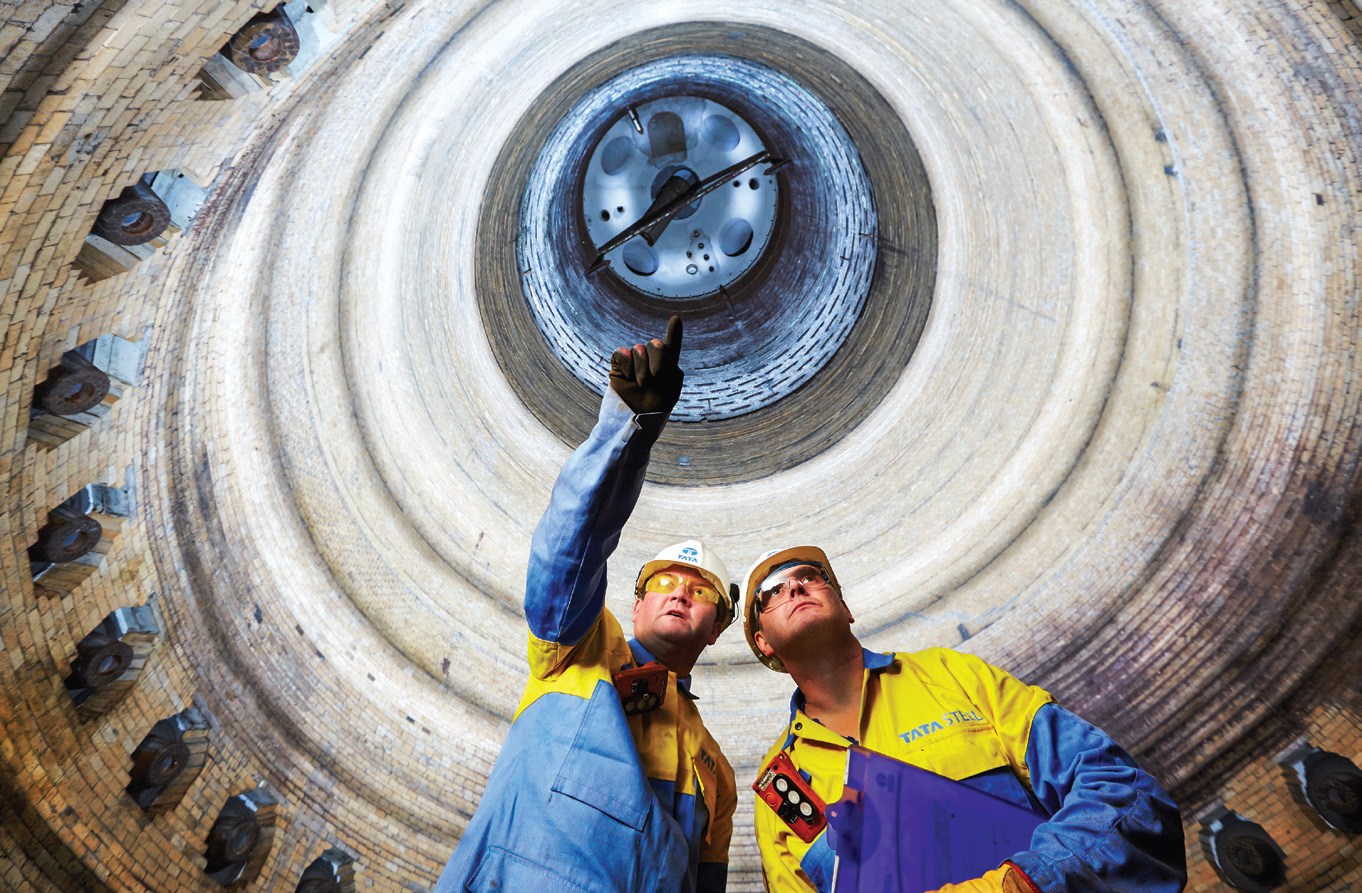
Blast Furnace 6 at IJmuiden Plant, Tata Steel Nederland
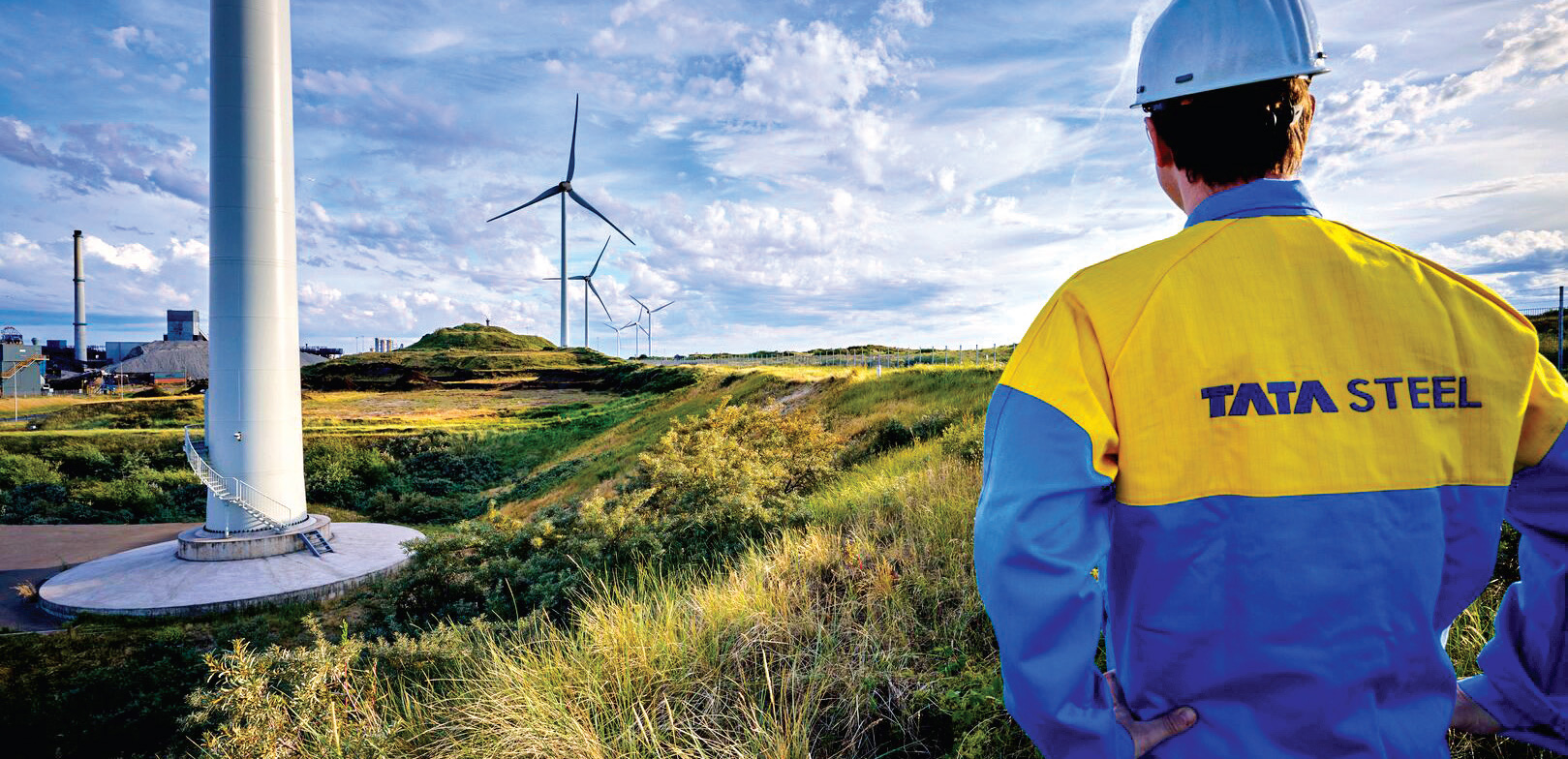
Towards Net Zero by 2045
What are your decarbonisation plans for Tata Steel Nederland?
We are in discussions with the Dutch government for a financial and policy-level support on a decarbonisation plan to replace one of the two blast furnaces with a Direct Reduced Iron (DRI) plant and an EAF before 2030. On March 28, 2024, the Dutch cabinet confirmed that the government is willing to support the proposal from Tata Steel and has given a mandate to the government to negotiate the same.
The Dutch government intends to reach a binding agreement with Tata Steel by the end of the present fiscal year, after approval from the Dutch parliament and the Tata Steel Board. The government has commenced due diligence on the proposal's financial, commercial, and technical aspects. This will be followed by detailed discussions over the next several months.
What were the commissioning activities undertaken at Kalinganagar during the year? What are Tata Steel’s plans for future expansion there?
We continued the phased commissioning of the 5 MTPA capacity expansion at Kalinganagar during the year. We started the 2.2 MTPA Cold Rolling Mill which has enhanced our product mix. The commissioning of the 6 MTPA Pellet Plant significantly reduced the Company’s dependence on external purchases, contributing to better cost management and operational efficiency. Stove heating was initiated, and power was charged into the new blast furnace which is expected to start production by September 2024. We also started the chimney heating for coke ovens.
As stated previously, Tata Steel is focused on investing in value accretive growth in India, which is an attractive market with increasing demand for steel. We are building a 0.75 MTPA electric arc furnace based steel plant in Ludhiana, Punjab, India. At Neelachal Ispat Nigam Limited, which was acquired through the Government of India’s DIPAM programme, we expect to increase the capacity from 1 MTPA to 5.5 MTPA in the first phase. We also expect to increase the Tata Steel Kalinganagar’s capacity in the 3rd phase (after completion of the current phase) from 8 MTPA to 13 MTPA. We are exploring plans to increase capacity at our Meramandali operations as well. Finally, we are also looking to enhance our downstream capabilities and related businesses.
What is the status of the amalgamation of business entities announced in FY2022-23?
As of March 2024, five strategic business entities were successfully merged into Tata Steel following the completion of regulatory procedures. This consolidation marks a pivotal step towards fortifying our position in value-added segments by leveraging our marketing and sales network across product lines. We are also accruing various benefits through synergies on raw materials, centralised procurement, inventory optimisation, logistics cost reduction and improved facility utilisation.
Meanwhile, the merger process for three other entities – Bhubaneswar Power Private Limited, Angul Energy Limited, and The Indian Steel and Wire Products Limited is expected to be completed in the first half of FY2024-25.
Can you elaborate on the reasons for Tata Steel's decision to surrender its Sukinda mine lease and closure of operations? What has been the financial impact of this surrender?
The Sukinda mine faced significant operational and regulatory challenges leading to its surrender. Historically operated through open cast mining, the mine’s reserves depleted. To continue extraction, transitioning to underground mining was necessary. The shift would have taken 2-3 years to commence, during which period production was to be on hold.
However, the mining regulations, including the Mine Development and Production Agreement (MDPA) targets, did not provide the required flexibility for the transition. Consequently, we decided to surrender the mine, resulting in a one-time cost of approximately ₹500 crore.
What were the sustainability efforts made by Tata Steel during the previous year?
Tata Steel has a multipronged approach to progress on its sustainability journey and many initiatives are undertaken with the aim of reducing our carbon footprint, enhancing resource efficiency, and fostering a sustainable future.
Tata Steel is among the first movers in decarbonising steelmaking operations. The Company has announced its plans to transition to low-CO₂ steel manufacturing across operations in the UK and the Netherlands.
The construction of our first lowcarbon steel plant in Ludhiana, Punjab, India has started. This scrap-based EAF facility will significantly reduce carbon emissions compared to traditional steelmaking. The plant is expected to be commissioned by March 2025 and will produce 0.75 MT of steel annually.
Tata Steel finalised agreements with Tata Power Renewable Energy Limited and TP Vardhman Surya Limited to source 379 MW of captive renewable power. This strategic move is expected to reduce 50 MT of carbon emissions over 25 years.
We also undertook pilots to avoid or convert captured carbon emissions including measures to green our energy mix such as biochar and hydrogen. We championed bamboo plantation in our leasehold land and communities’ barren land around our Jharia coal mines. This collaboration aims to generate livelihood opportunities for farmers and act as a carbon sink over time.
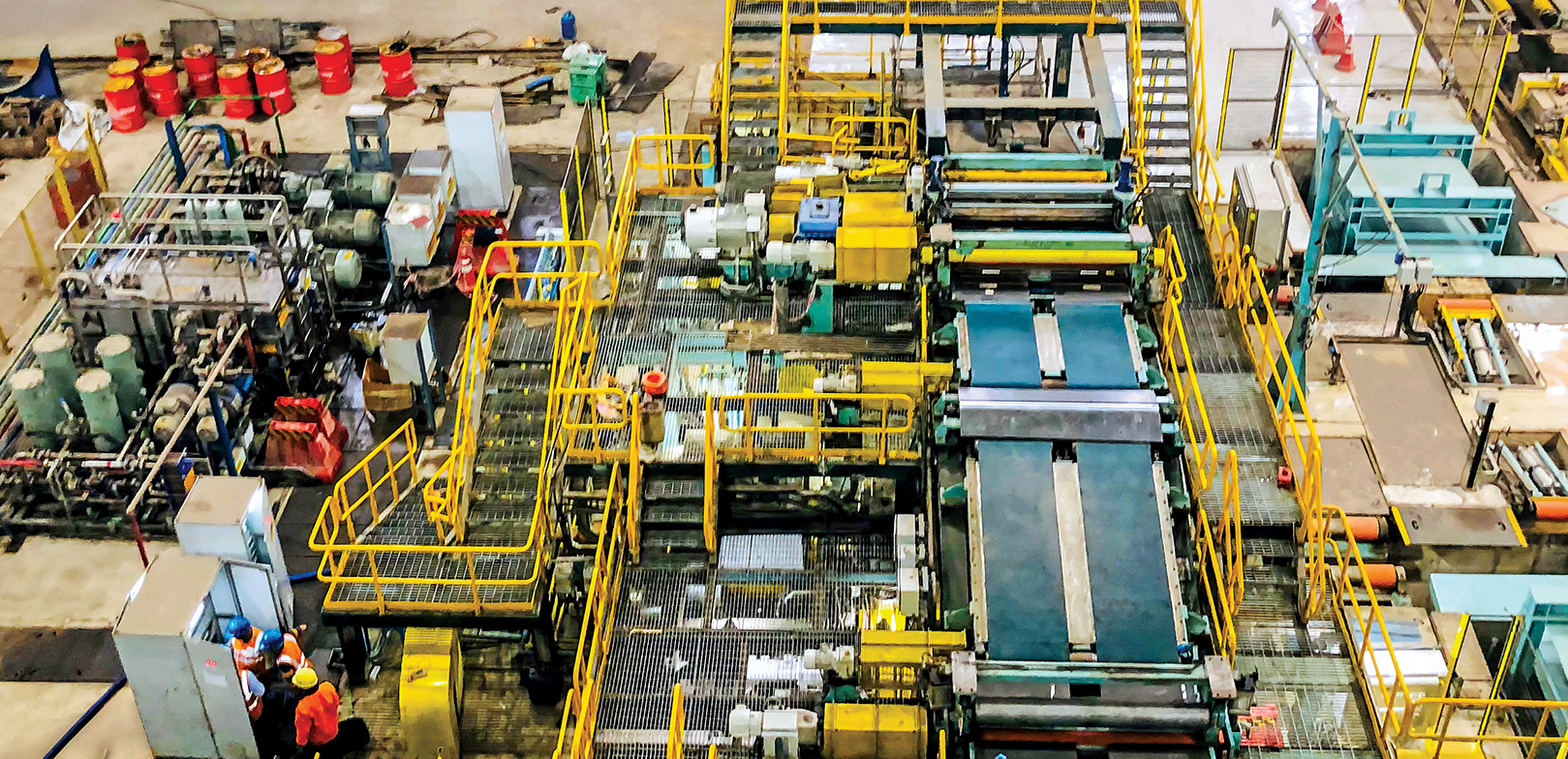
Continuous Annealing Line, Tata Steel Kalinganagar
Tata Steel has a multipronged approach to progress on its sustainability journey and many initiatives undertaken with the aim of reducing our carbon footprint, enhancing resource efficiency, and fostering a sustainable future.
The bamboo can be converted into biochar which can replace, to a certain extent, pulverised coal injection in our blast furnaces to reduce emissions. Our water conservation efforts led to zero effluent discharge at Kalinganagar site.
We integrated an eco-conscious fleet of advanced commercial vehicles from Tata Motors into our operations. These vehicles, powered by LNG and electric batteries, are expected to significantly reduce our Scope 3 CO2 emissions in road transportation.
We also completed a fullladen voyage using B24 biofuel, transporting 1,48,500 tonnes of coal from Gladstone, Australia to Paradip, India and achieved a 20% reduction in carbon emissions. The B24-grade biofuel blend consisted of 24% used cooking oil methyl ester (UCOME) and 76% very low sulphur fuel oil (VLSFO). We also became the first company in India to use LNG-powered capsize bulk carrier for transporting raw materials.
These milestones highlight our commitment to sustainable maritime practices.
The Company signed an MoU with Imperial College London to invest £10 million to establish a Centre for Innovation in Sustainable Design and Manufacturing that will focus on smart manufacturing techniques, sustainable multi-material joining technologies, and Net Zero construction innovations. The Company also joined the Leadership Group for Industry Transition (LeadIT), a platform initiated by Sweden and India, that fosters Net Zero transitions across heavy industries through initiatives such as Coal Bed Methane (CBM) injection, hydrogen injection in blast furnaces, and carbon capture plant.
We launched ‘Tata Steel – Sprint to Zero’ 2023 challenge to fund innovative projects focused on lowcarbon hydrogen technologies. The initiative aligning with the UK-India hydrogen partnership supports two groundbreaking projects aimed at decarbonising the steel Industry.
Our Kalinganagar and Meramandali plants received the ResponsibleSteelTM Certification, with over 90% of our steel production capacity in India now accredited under this framework. This certification acknowledges our dedication to environmental stewardship and responsible business practices. Reaffirming this deep-rooted commitment to sustainability, Tata Steel was distinguished as a Steel Sustainability Champion by the World Steel Association (worldsteel) for the seventh consecutive year, marking its unwavering recognition since the inception of this demanding sustainability programme.
Could you elaborate on the Company's initiatives for community engagement and outreach in the regions where it operates?
Tata Steel has implemented a comprehensive range of community engagement and outreach initiatives aimed at fostering sustainable development and improving the quality of life in the regions where it operates.
Tata Steel Foundation (TSF) anchors the Company’s social impact programmes, which impacted 4.4 million people in FY2023-24. TSF focuses on designing scalable and replicable change models across education, public health, tribal identity, livelihoods, agriculture, water, and disability.
Our Initiatives like the MANSI+ (Maternal and Newborn Survival Initiative) operates in over 50 development blocks across districts in Jharkhand and has helped to stabilise over 80% of identified severely acute malnourished newborn children. This initiative has been crucial in reducing infant mortality rates in the region.
Our community-based education programmes have significantly contributed to the fight against child labour and have led to the declaration of 440 panchayats as child labour-free zones in Keonjhar, Odisha, India.
'Masti Ki Pathshala' is an initiative aimed at eliminating the worst forms of child labour to improve the lives of children from vulnerable backgrounds, including those who are street children, child labourers, or have been exposed to extreme conditions such as homelessness. The programme operates through both residential and non-residential bridge schools designed to transition children from child labour to formal education. In addition to educational needs, the initiative also addresses health and psychological support to children.
We have also undertaken significant efforts to advance the preservation and growth of tribal identity and languages and fostering a deeper connection to the cultural heritage among tribal communities. These efforts currently cover 40,600 learners across 702 centres, promoting the use of 10 different tribal languages of eastern India. During the year, we developed around 40 original literary and academic works in these languages. Samvaad, a pan-India tribal conclave plays a crucial role in these efforts as it serves as a platform for dialogue and cultural exchange, helping to maintain and celebrate tribal identities.

Tata Steel's education initiatives helped in eliminating child labour
The Company’s climate-resilient agriculture initiatives have assisted over 90,000 farmers, leading to increased incomes through sustainable farming practices and market linkages. Our health programmes have focused on reducing the incidence of malaria and tuberculosis through community awareness and health camps for early diagnosis and prompt treatment, as well as the identification and treatment of highrisk cases, particularly among women and children.
During the year, we expanded our health infrastructure by inaugurating two new Tata Main Hospitals in Noamundi and West Bokaro, Jharkhand, adding approximately 200 beds to the region’s medical capacity. The hospitals we have built, provide medical care to over 1 million people.
We have also focused on water conservation, creating significant water storage capacity in treated lands. Our water conservation activities have touched over 47,000 lives, creating nearly 166 cubic feet of water storage and treating 1,450 acres of land in the past three years.
Our initiatives are designed to bring a transformational change through a collaborative approach. The Company’s extensive understanding of communities enables it to partner effectively with like-minded organisations. Going forward, we would like to leverage both private and public capital to amplify the impact of our programmes on a much larger scale.
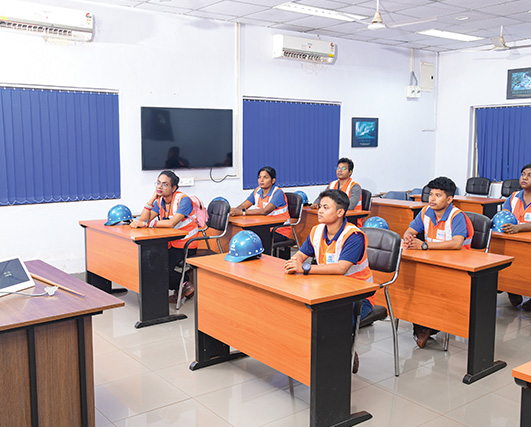
Training initiative for Tata Steel's transgender employees
Could you shed some light on Tata Steel’s initiatives that aim to promote Diversity, Equity and Inclusion (DE&I) across the organisation and efforts to ensure safe working environment?
Tata Steel has been the vanguard of DE&I principles. It consistently works to establish a welcoming and supportive workplace, irrespective of gender identity, sexual orientation, or any other distinction. The Company’s comprehensive DE&I approach is manifested through various initiatives including unconscious bias training, the establishment of employee resource groups, and the provision of inclusive benefits packages.
Tata Steel is actively advancing its DE&I initiatives through progressive hiring practices and through various events such as Ananta Quest and QUEERious. The inaugural Ananta Quest event this year, aimed at students with disabilities from India’s top institutions and winners were offered internships and placement opportunities, highlighting the dedication to integrating diverse talent. Tata Steel also became the first Indian company to integrate transgenders into mining operations, when it welcomed 14 transgender employees as Heavy Earth Moving Machinery operator trainees at its West Bokaro Division in Jharkhand, India. This aligns with our pioneering efforts to promote inclusivity and integration of LGBTQIA+ talent into the corporate environment. For its consistent and progressive efforts, Tata Steel was recognised as a Gold Employer by the India Workplace Equality Index (IWEI) 2023.
Coming to workplace safety, the Company continues to adopt a proactive stance on ensuring safety against potential personnel and operational risks. We have protocols and frameworks designed to preempt incidents that could lead to injuries. We have adopted digital tools to substantially reduce risk of failure of Process Safety Critical equipment and established Process Safety School of Excellence to improve the process safety competency of employees across all locations. We have a real-time visualisation system, which employs modern technology and digital tools to monitor the health of safety barriers, providing early warnings of potential failure in hazardous processes. Our safety initiatives exemplify our dedication to achieving Zero Harm and the Company has been distinguished with the Safety and Heath Excellence Recognition, 2023 by the World Steel Association (worldsteel) for elevating the safety standards within the steel industry.